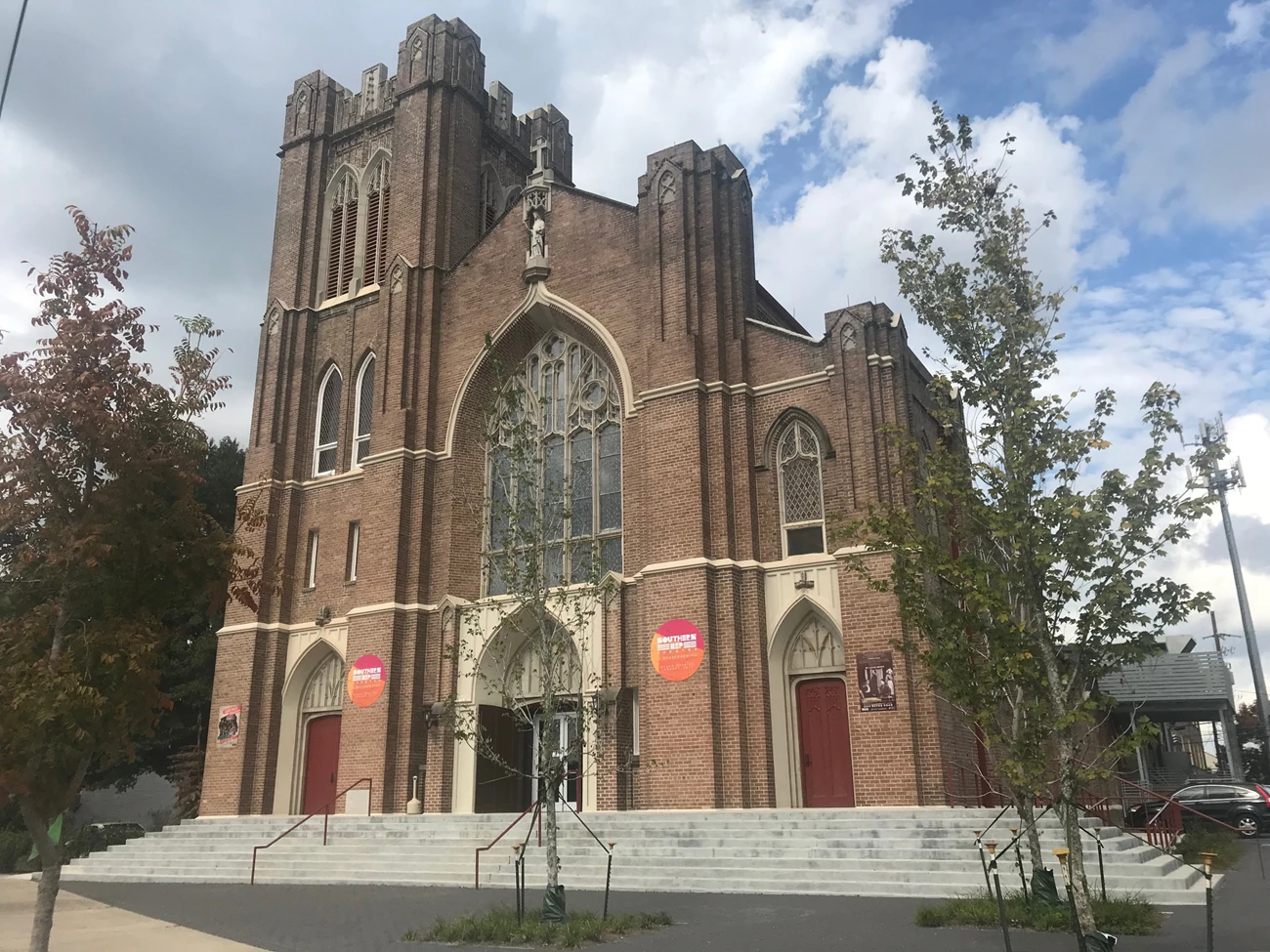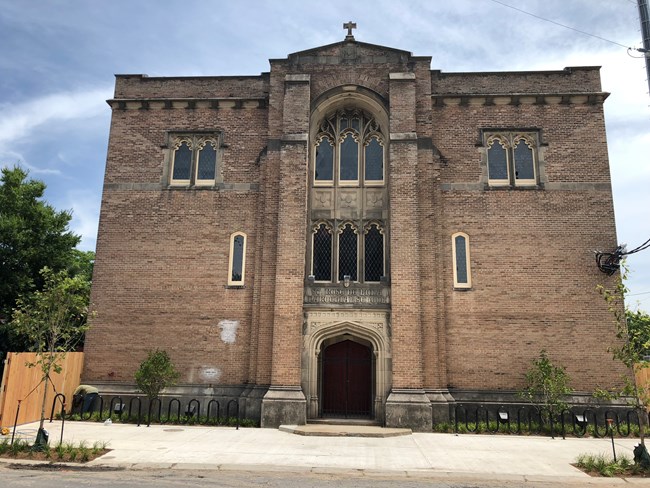Last updated: September 4, 2024
Article
Case Study: St. Rose de Lima Church Complex, New Orleans, Louisiana


History and Context
Originally established in 1857, the St. Rose de Lima Parish was the site of a seminal event in New Orleans’ history celebrating the parish’s abolitionist priest, the Rev. Claude Paschal Maistre, who defied the archdiocese and performed the funeral of Capt. Andre Cailloux, a free man of color who died in the Civil War in 1863. In the late 19th century, the parish relocated to its current site, which is now a predominantly Afro-Caribbean corridor lined with pastel storefronts housing an eclectic mix of diverse, locally owned businesses. Following decades of disinvestment and decline, the area has recently benefited from a strong public-private revitalization effort. However, the most prominent property, St. Rose de Lima Church and the two schoolhouses on its site, sat vacant and deteriorating for twelve years.
Scope of Rehabilitation
Alembic Community Development and Rose Community Development Corporation partnered to redevelop the complex of three historic properties, which are located in the Esplanade Ridge National Register Historic District in New Orleans’ 7th Ward, as the Rose Collaborative for Arts, Education, and Entrepreneurship.
The rehabilitation project was undertaken as a three-part program. The 1915 church was rehabilitated as the new home and performance art space for New Orleans’ acclaimed Southern Rep Theatre. The theater also offers special programing such as Care for Creatives for adults and after-school programs and summer camps for youth.
The frame schoolhouse that dates to 1938 was rehabilitated as shared office spaces for social justice nonprofit organizations and entrepreneurs. The ground floor co-working space is anchored by Fund 17, a nonprofit organization that operates a Community Business Incubator that provides training and mentorship programs as well as access to capital for micro-entrepreneurs.
The 1925 brick school was rehabilitated for the nonprofit Waldorf School of New Orleans, which has operated in the city since 2000. The school integrates academics with the arts, culture, and community from nursery school through 8th grade.
The project faced significant design and construction challenges, in particular how to create a professional theater in the deconsecrated church that respected and preserved its historic character and met the Secretary of the Interior’s Standards for Rehabilitation. The team’s solution was to construct a box within the church’s volume with dedicated HVAC and electrical systems that create a self-contained black box theater. A secondary performance space was created in the open area at the front of the church. The team coordinated work on the three buildings simultaneously and packaged the scope of work for sub-contractors to ensure that small, minority-owned firms could bid on the jobs. The presence of lead-based paint and asbestos in all three buildings, plus the fact that the site was a brownfield with hazardous materials that had to be removed, added to the challenges faced in the rehabilitation project.
Role of the Historic Tax Credit
Both the Federal and Louisiana State Historic Tax Credits were critical to financing the rehabilitation of the three historic buildings. The rehabilitated buildings produce limited revenue because they offer affordable, below-market rate leases to the nonprofit tenants. This results in reduced cash flow that falls far short of supporting conventional financing. The equity realized through the Federal and State Historic Tax Credits, as well as other community development incentives, was vital in filling redevelopment financing gaps and made the project possible.
Economic Impact on the Community
The project has revitalized not only the St. Rose de Lima campus, but also the surrounding commercial establishments. The tenants in the rehabilitated buildings and the services they provide draw many visitors, including the 30,000 patrons who attend the Southern Rep Theatre’s performances. These visitors also support the small neighborhood businesses nearby. Eventually, approximately 165 new full and part-time jobs will have been created for educators, administrators, playwrights, directors, performers, lighting and sound technicians, and other professionals. The rehabilitated offices in the 1938 school building annually supports the nearly 100 micro-entrepreneurs who share the space, and it offers the social justice organizations a collaborative environment to better execute their missions. The Waldorf School is projected to serve more than 200 students, providing 100% scholarships to low-income students.
Learn More
Fiscal Year 2019 Highlights and Reports
- Federal Tax Incentives for Rehabilitating Historic Buildings Annual Report for Fiscal Year 2019
- Annual Report on the Economic Impact of the Federal Historic Tax Credit for Fiscal Year 2019
Additional Case Studies
- Case Study: Cambridge Apartments (Seattle, Washington) The historic rehabilitation of the Cambridge Apartments illustrates how historic preservation can meet the demand for affordable housing. The rehabilitated Cambridge Apartments provides affordable housing that is convenient to the city’s financial, government, hospital, and education job centers and serves households earning below 50% to 60% of area median income.
- Case Study: Robinson Theater (Clarksburg, West Virginia) The Robinson Grand Performing Arts Center attracts over 120,000 visitors to 250 events a year in Clarksburg, West Virginia. The impact of the rehabilitation of the historic theater has been a catalyst for new economic development in the area, and increased local tax revenues can be attributed to increased foot traffic in and around the theater.
- Case Study: Hale Bathhouse (Hot Springs, Arkansas) The Hale Bathhouse is the oldest bathhouse on Bathhouse Row in Hot Springs National Park. Its rehabiltation into Hotel Hale was made possible with a long-term lease from the National Park Service.
